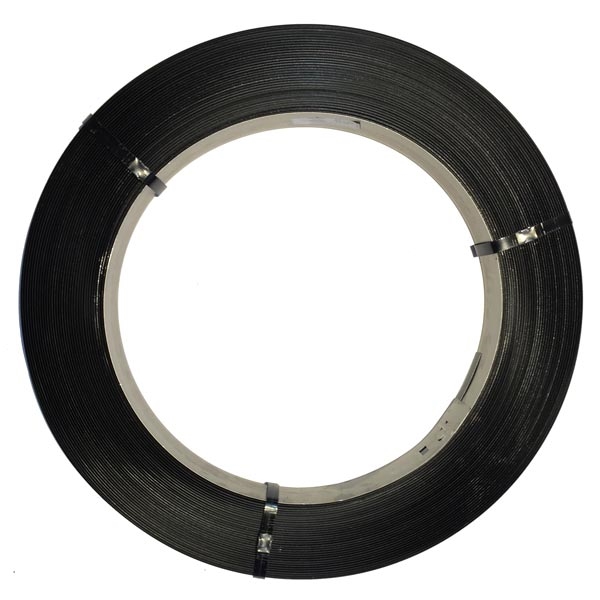| Code | Width (mm) | Thickness (mm) | Break Load (Kg) | Yield (M/Kg) | Packing (Kg) |
|---|---|---|---|---|---|
| HLISS13 | 13 | 0.38 | 377 | 26.4 | 50 |
| HLISS13 | 13 | 0.46 | 445 | 21.8 | 50 |
| HLISS13 | 13 | 0.58 | 574 | 17.29 | 50 |
| HLISS16 | 16 | 0.38 | 466 | 21.1 | 50 |
| HLISS16 | 16 | 0.46 | 555 | 17.4 | 50 |
| HLISS16 | 16 | 0.51 | 666 | 15.7 | 50 |
| HLISS16 | 16 | 0.58 | 691 | 13.8 | 50 |
| HLISS19 | 19 | 0.38 | 564 | 17.6 | 50 |
| HLISS19 | 19 | 0.46 | 658 | 14.5 | 50 |
| HLISS19 | 19 | 0.51 | 720 | 13.2 | 50 |
| HLISS19 | 19 | 0.58 | 840 | 11.5 | 50 |
- Steel Strapping is the oldest and most commonly used banding materials to this day steel Strapping is designed for extreme tasks that
require a heavy or very heavy duty strap. - Steel Strapping is optimal for packaging industrial equipment, heavy construction materials, and shipping steel coils.
- Steel Strapping is applied manually with a tensioning tool and the fastened together by crimping a steel strapping seal around the bands ends.
The excess steel strapping is then cut and disposed of. - Features and benefits of steel strapping include large loads, hot temperatures, sharp edges, high break strength, low elongation, UV resistance and high durability.
